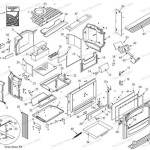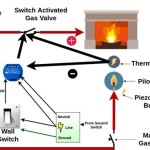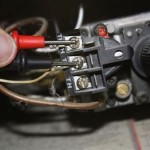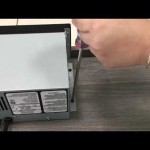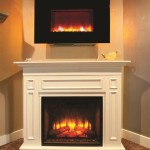Molding Around Fireplace Floor: Enhancing Your Hearth’s Aesthetics
Fireplaces are focal points in many homes, adding warmth, ambiance, and a touch of elegance to the living space. While the fireplace itself is a beautiful feature, the surrounding area often requires some attention to create a cohesive and visually pleasing design. Molding around the fireplace floor is a popular method for seamlessly integrating the hearth into the overall room design, adding a touch of refinement and sophistication. This article will explore the various aspects of molding around a fireplace floor, providing insights into its benefits, materials, installation, and design considerations.
Benefits of Molding Around a Fireplace Floor
Molding around a fireplace floor offers various benefits beyond simply enhancing aesthetics. It serves as a practical and functional element, contributing to both the visual appeal and the functionality of the space. Here are some key advantages:
- Clear Definition and Separation: Molding creates a well-defined boundary between the fireplace hearth and the surrounding flooring, establishing a distinct area and preventing the hearth from appearing as an isolated element.
- Visual Enhancement: It elevates the overall aesthetic appeal of the fireplace, adding a touch of elegance and sophistication to the room. The intricate designs and patterns of molding can complement the surrounding decor, creating a more polished and refined atmosphere.
- Protection and Durability: Depending on the material chosen, molding can provide a protective barrier around the hearth, shielding it from potential damage caused by spills or foot traffic. This is particularly beneficial for materials like wood flooring.
- Transition and Continuity: Molding helps to smoothly transition between different flooring materials, creating a seamless flow and visually connecting the fireplace to the rest of the space. It can also be used to complement existing trim work and create a unified aesthetic.
Materials for Fireplace Floor Molding
Selecting the right molding material is crucial for achieving the desired look and ensuring durability. The choice should complement the overall style of the fireplace and the surrounding decor, while also considering the desired level of protection and maintenance. Here are some common materials used for fireplace molding:
- Wood: A classic and versatile choice, wood offers a wide range of styles, colors, and finishes. It can be stained or painted to match the surrounding trim or the fireplace itself. Popular wood varieties include oak, maple, cherry, and walnut.
- Moulding: Available in various styles and materials, such as polyurethane, PVC, or MDF, molding offers a budget-friendly alternative to wood. It is lightweight, easy to install, and comes in a range of pre-finished options for convenience.
- Stone or Tile: For a more rustic or traditional look, stone or tile molding can be used. Natural stone options include slate, granite, or marble, while tile offers a wider range of colors and patterns. These materials require professional installation and can add a substantial cost to the project.
- Metal: Metal molding, such as aluminum or brass, provides a modern and sleek aesthetic. It is durable and resistant to moisture, making it ideal for areas prone to spills or splashes.
Installation and Design Considerations
The installation of molding around a fireplace floor involves several steps, requiring careful planning and execution. The following considerations will help ensure a successful and visually appealing outcome:
- Planning and Measurement: Accurately measure the dimensions of the fireplace hearth and surrounding area to determine the required length and shape of the molding. Consider the size of the molding and the desired visual effect.
- Cutting and Shaping: Depending on the material, use appropriate tools (e.g., miter saw, hand saw) to cut the molding to the desired dimensions and shape. This may require precise angles for corners and curves.
- Installation and Adhesion: Secure the molding to the floor using construction adhesive, nails, or screws. Ensure proper alignment and evenness, especially for corners and transitions.
- Finishing: Once installed, the molding may require finishing, such as staining, painting, or sealing, depending on the material and desired look. Apply finish coats carefully and allow them to dry completely before applying any additional layers.
When designing the molding around a fireplace floor, consider the following elements:
- Style and Design: The style of the molding should complement the overall design of the fireplace and the surrounding decor. Consider traditional, contemporary, or transitional styles to create a cohesive look.
- Size and Proportion: The size of the molding should be proportionate to the dimensions of the fireplace and the surrounding area. Too large or too small molding can disrupt the balance and visual harmony.
- Color and Finish: Choose a color and finish for the molding that complements the fireplace, surrounding trim, and flooring. Consider contrasting or matching colors to create the desired visual effect.

Edging For Flooring Around Fireplace Mumsnet

Help Edging Trim For Fireplace Heart Hometalk

Brick Fireplace Makeover You Won T Believe The After Harper House

Transition Moldings Unique Wood Floors Installing Hardwood Fireplace Hearth Burner
:strip_icc()/101343186-8909e34a95d74e0087ce39e27577ca41.jpg?strip=all)
How To Tile A Fireplace Hearth

Diy Fireplace Finished Addicted 2 Decorating

Seal Around The Fireplace Hearth

How To Add Floor Trim Transitions And Reducers Young House Love

How To Install Your Laminate Wood Floor Against Brick Or Stone Fireplace Wall Undercut

Fireplace Trim

